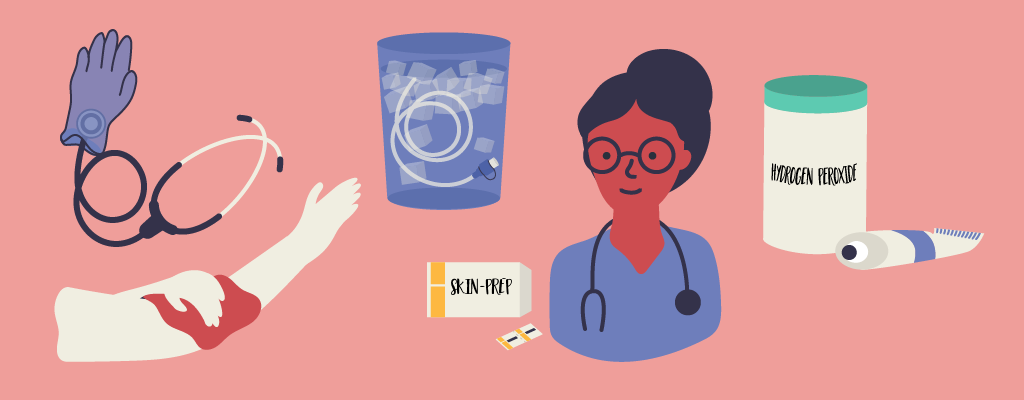Nurse life is full of highs and lows, no matter what field you’re in. Nursing school was great for book learning, but on-the-job training tells us the nursing tips we really need to know. Whether you’re an ER, ICU, floor nurse, or another specialty, it’s helpful to have some tips to make our lives a little easier. We’ve spent a lot of time in school and even more time in patient care, so it’s only fitting that we’ve come up with some pretty amazing tips and tricks over the years! Obviously there are no shortcuts for excellent nursing care, but these little gems will enhance your knowledge of what you need to know to be a nurse.
Get job matches in your area + answers to all your nursing career questions

Nursing Tips for Vital Signs and Assessments
There’s no substitute for a thorough nursing assessment, but there are definitely ways to make it more efficient. Check out these nursing hacks for a good assessment:
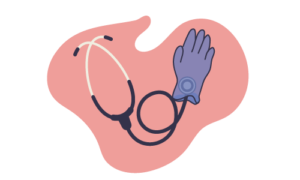
Cover the bell of your stethoscope with an exam glove. This will decrease chances of transmitting bacteria from patient to patient.
Tell a patient you are checking their pulse when counting respirations. If they think you’re just checking their pulse, they will be more likely to breathe normally. If you tell them you’re watching them, they’ll likely be more self-conscious and may not breathe like they should.
For ticklish patients, palpate abdomen first with your hand on top of theirs. This gets them used to a hand on their stomach and will make them less likely to give you a hard time during your exam.
Check a pulse ox on an earlobe, toe, or forehead. If you are having trouble picking up an oxygen reading on a patient, try alternating placement of the pulse ox sensor. The earlobe and toe are great options, and the forehead may work on some patients as a last resort.
Nursing Hacks for Cleaning Up Messes
Nursing is a messy job, no doubt. While there’s no getting around that, there are ways to make those messes a little easier to deal with! Check these emergency nursing tips out for messy patients:
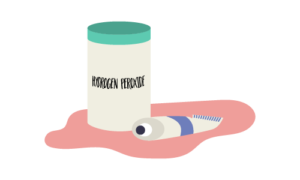
Use lube or hydrogen peroxide on dried blood for easier cleanup. Dried blood can really get stuck on there – moistening the area with lube or hydrogen peroxide can lift the dried stuff away from the skin, saving your sanity and your patient’s dermal layers.
Double glove with code browns. There’s nothing worse than cleaning up poop and realizing it’s gotten on your gloves and on your brand new changed sheets. If you double glove and notice they’re dirty, simply peel off the outer layer and bam, fresh gloves are right underneath.
Double mask with toothpaste, Vicks, or peppermint oil between the masks to help you with extra stinky smells. Because putting that peppermint oil directly under your nose is certainly not an option! Having a strong scent rubbed on a mask will get you through extended amounts of time in a stinky patient room and will save the skin on your face.
Smelling alcohol pads can help with nausea. This WORKS, especially in patients that are getting chemotherapy. When you see your patient start to get queasy, wave an alcohol pad under their nose for a few seconds, then place it on the bridge of their nose. It messes with the little receptors in your brain that cause you to feel nausea and often will ease it up.
For bad smelling rooms, roll up a 4×4 gauze and put it inside a bottle of peppermint oil. The gauze will act like a wick and the bottle will become a peppermint diffuser that will help with any stinky smells.
Powder the bedpan before placing under the patient for easier retrieval after the deed. Skin on plastic can get sticky and painful, especially after sitting on it for a long time. Putting a little powder on the pan will help it slide right out and save your patient’s skin in the process.
Add lotion to wipes when cleaning up incontinent patients for easier cleanup. This is along the same lines as using lubricant to wipe up dried blood. By using lotion, you are making it easier
Nurse tips for IV Starts
“Bleed” your IV bag. After spiking your IV bag, turn it over and remove the tubing. Squeeze out excess air and replace the tubing, then prime it as usual. When the bag is empty, the chamber will stay full and your tubing will not dry out, making it easier to hang a second bag without having to prime it.
Clamp your tubing first before priming IV fluids to prevent air bubbles. After spiking your bag, unclamp and allow the tube to prime slowly and watch your bubble-free tubing fill up!
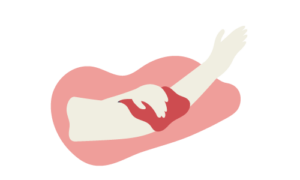
Use heat to find veins. Use a warm washcloth, heat pack or infant heel warmer to get veins to plump up before IV insertion. Place whatever you’re using on the site for at least 5 minutes before you stick. Be sure to put something between the patient’s skin and the heat source to prevent burns.
Use adhesive remover or an alcohol wipe for tape removal. You can also pull a Tegaderm parallel to the skin (kind of like removing a command strip from the wall) for less painful removal.
Place a piece of gauze between the patient’s skin and a tourniquet to prevent hair pulling when removing the tourniquet. Your patients may not appreciate a free wax job during their hospital stay, so this can be a useful trick.
Get job matches in your area + answers to all your nursing career questions

A Clean Nurse is a Happy Nurse

Use skin prep on your nose to keep your glasses from sliding down. That way, you’re not reaching up with dirty gloves to make sure they don’t fall off!
Wear an isolation gown over your uniform if eating a messy lunch to keep your scrubs clean. Because no patient wants to know what you had for lunch by seeing it on your uniform.
Keep extra scrubs in your car or locker for emergency changes. You never know what the day will hold, and there’s always the chance you’ll need an extra set of clothes to change into.
Use a glove as a nurse hair tie. Nurses need to have hair out of their faces when doing their job! If you forgot your hair tie, simply cut the elastic band from the cuff of a glove and use it to put your hair up.
Nursing Tips for NG Tubes and Foleys
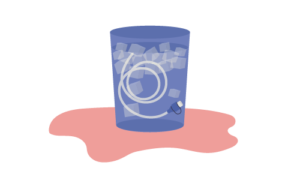
Soak NG tube in ice water or place in the freezer 15-30 minutes before insertion. Inserting an NG tube is never pleasant for anyone, but doing this will make for a more comfortable, less painful experience for the patient.
Wipe “up” with your last betadine swab on female patients before inserting a Foley catheter. The urethra will “wink,” making accurate placement an easier task.
Aim high when placing catheters in female patients. Also, if you’re not sure what you’re looking at, have female patients cough before placement and look for the “wink.”
Use more than one cath kit. Think you missed when placing a Foley in a female patient? Leave that catheter in place to mark the incorrect spot, get a new kit and try again. This prevents you from continually placing the catheter in the wrong spot. Aim higher than the incorrectly placed one and you’ll be in the right area.
These are just a few of the tips and hacks that ER and ICU nurses use to make their lives easier at work. Many of these nurse tips help to maintain the comfort and dignity of your patients, which is incredibly important. Placing IVs, foley catheters, and NG tubes are some of the most uncomfortable procedures that patients go through in the hospital, so you should make every effort that you can to make sure it goes quickly and smoothly. Code browns can be very embarrassing for patients, so using these nursing hacks for those situations can make things a little better for all involved.
With these nursing hacks and tips, your patients will be happy and you will enjoy being the rock star nurse that you are! Happy nursing!
Get job matches in your area + answers to all your nursing career questions

